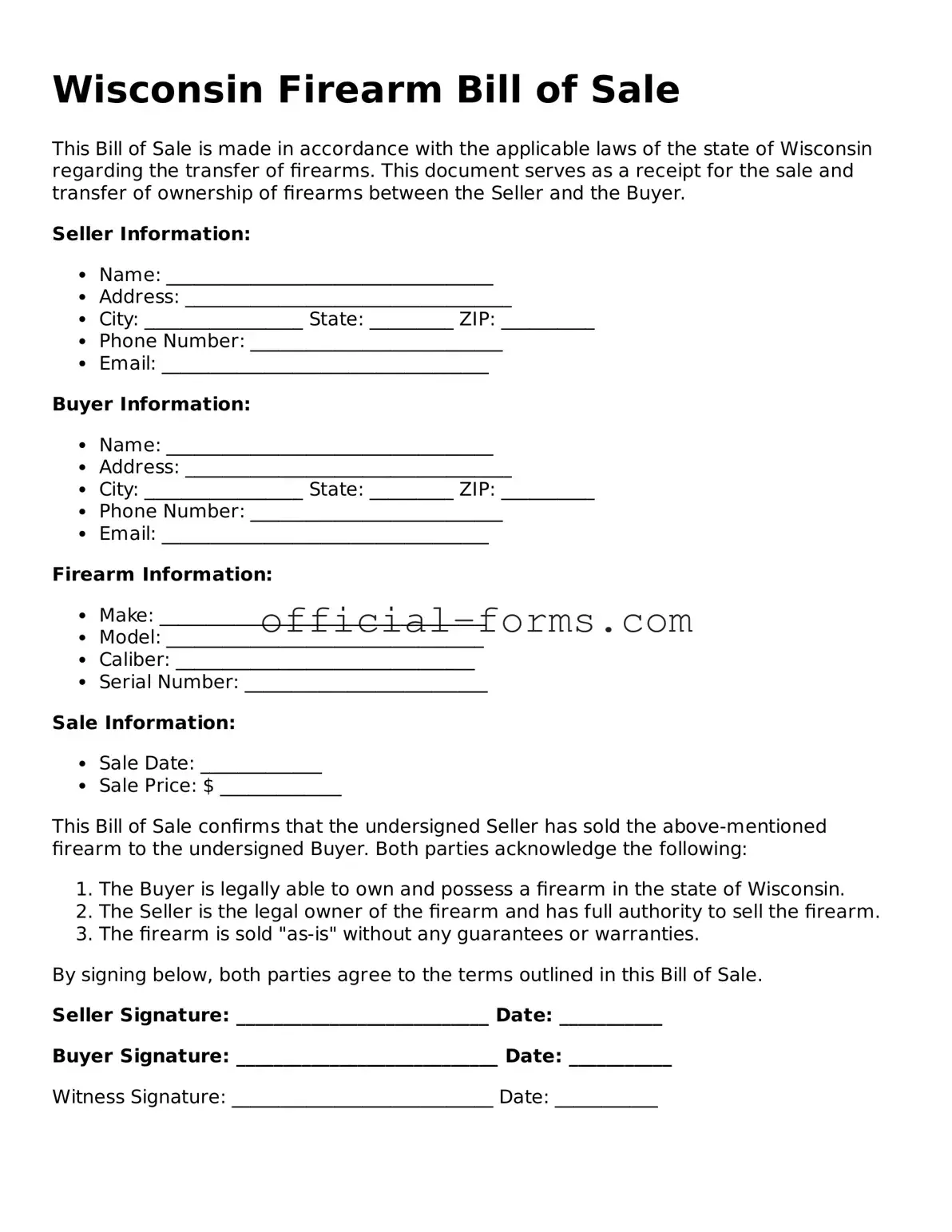Official Wisconsin Firearm Bill of Sale Document
The Wisconsin Firearm Bill of Sale form serves as a legal document that records the transfer of ownership of a firearm between parties. This form ensures that both the seller and buyer have a clear understanding of the transaction details, providing necessary protection and documentation. Understanding its components and significance is essential for anyone involved in the buying or selling of firearms in Wisconsin.
Open My Firearm Bill of Sale Now
